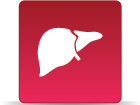Quinoline
CASRN 91-22-5 | DTXSID1021798
- Toxicological Review (PDF) (40 pp, 163 K)
- IRIS Summary (PDF) (23 pp, 158 K)
On this page:
Noncancer Assessment
Reference Dose for Oral Exposure (RfD) (PDF) (23 pp, 158 K) Last Updated: 09/27/2001
Information reviewed but value not estimated.
Reference Concentration for Inhalation Exposure (RfC) (PDF) (23 pp, 158 K) Last Updated: 09/27/2001
Information reviewed but value not estimated.
Cancer Assessment
Weight of Evidence for Cancer (PDF)
(23 pp, 158 K)
Last Updated: 09/27/2001
| WOE Characterization | Framework for WOE Characterization |
|---|---|
| B2 (Probable human carcinogen - based on sufficient evidence of carcinogenicity in animals) | Guidelines for Carcinogen Risk Assessment (U.S. EPA, 1986) |
| Known/likely human carcinogen | Proposed Guidelines for Carcinogen Risk Assessment (U.S. EPA, 1996) |
- Quinoline is considered likely to be carcinogenic in humans in accordance with proposed EPA carcinogen risk assessment guidelines (U.S. EPA, 1996) on the basis of observations of exposure-related increased incidence of an unusual malignant tumor in multiple strains of rats and mice, multiple experiments using oral, i.p. and s.c. dosing at an early age. This determination is supported by studies that demonstrate that quinoline is genotoxic.
- This may be a synopsis of the full weight-of-evidence narrative.
Quantitative Estimate of Carcinogenic Risk from Oral Exposure (PDF) (23 pp, 158 K)
Oral Slope Factor:
3
per mg/kg-day
Drinking Water Unit Risk:
9
x 10-5
per µg/L
Extrapolation Method: Time-to-tumor, multistage-Weibull
Tumor site(s): Hepatic
Tumor type(s): Hepatic hemangioendotheliomas or hemangiosarcomas (Hirao et al., 1976)
Quantitative Estimate of Carcinogenic Risk from Inhalation Exposure (PDF) (23 pp, 158 K)
Information reviewed but value not estimated.
Chemical Documents
Other EPA Information
- Human Health Benchmarks for Pesticides (HHBP). This database provides human health benchmarks for pesticides that may be present in drinking water.
- Office of Pesticide Programs Pesticide Chemical Search. This database provides links to health effects information and registration status for pesticides.
- Chemistry Dashboard. This database provides information on chemical structures, experimental and predicted physicochemical, and toxicity data.
Related Links
Tumor Sites
Chemical Structure

Synonyms
- B-500
- Benzo[b]pyridine
- Benzopyridine
- Chinoleine
- Chinoline
- Leucol
- Leucoline
- Leukol
- 1-Azanaphthalene
- 1-Benzazine
- 1-Benzine
- 91-22-5

